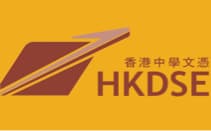November 7th, 2013

This week I presented a session on Hong Kong’s new secondary education curriculum at the Bi-Regional NAFSA V & VI Conference (in Indianapolis, IN) and NAFSA Region XII Conference ( in San Diego, CA) .
With an increased number of senior secondary graduates competing for the same number of university place in Hong Kong in the post-A-level era, more Hong Kong students are expected to be looking abroad for higher education opportunities in the near future. This means that Hong Kong has the potential to become an increasingly attractive source of students for institutions recruiting internationally, especially when one considers their English-language ability and the comparative secondary standards in Hong Kong.
In preparation of recruitment, enrollment and evaluation of credentials of future students from Hong Kong, I hope you’ll find the brief overview on Hong Kong’s education system and its current secondary program helpful. At the end of this blog I’ve also provided a list of sources you may find useful.
As many of you know, Hong Kong was a colony of the United Kingdom and was under its administration from 1841 to 1997. In July 1997, the transfer of sovereignty of Hong Kong was handed over to China by the UK. As a former colony of Britain, the Hong Kong education system was heavily influenced by the British model. It mirrored the British system of the GCE O-levels and A-levels. In the old system, students took the Hong Kong Certificate of Education Examination (HKCEE) at the end of Secondary 5 (which was 11 years of primary and secondary education). Students planning to study at the university level in Hong Kong, studied two additional years known as Sixth Form *(lower 6 and upper 6) and at the of the second year, they sat for the Hong Kong Advanced Level Examination (HKALE).
Since the handover of Hong Kong from Britain to China in 1997, the education system has undergone a series of changes reflecting different language of instruction policies and a significant overhaul of the secondary system. Below are highlights of the changes to the senior secondary system which went into effect as of 2009/2010 and the new Hong Kong Diploma of Secondary Education (HKDSE):

1. Compulsory education is 9 years; six years of primary and three years of junior secondary.
2. Senior secondary is 3 years, and covers years/grades 10, 11, and 12.
3. Education at public schools from Primary through Senior Secondary is free.
4. Students in Grade/Year 12 prepare for the Hong Kong Diploma of Secondary Education (HKDSE)
5. At the end of the 12th year, students sit for examinations leading to the Hong Kong Diploma of Secondary Education (HKDSE).
6. Based on the final examination results, the HKDSE offers senior secondary graduates access to a range of post-secondary, vocational and tertiary courses covered by a variety of institutions based on
7. Immediately after the 1997 Handover, the majority of local secondary schools have adopted Chinese as their medium of instruction but since then, many have reverted to an English medium instruction. In 2013, 112 out of 400 secondary schools offer English as their medium of instruction.
8. The new Hong Kong secondary curriculum was first introduced at the Secondary 4 level (Grade/Year 10) in September 2009.
9. The HKDSE examinations are held at the end of Form 6 (Grade/Year 12).
10. The HKDSE examination was administered for the first time in the summer of 2012.
11. The HKDSE curriculum includes: 4 core subjects (English, Mathematics, Chinese and Liberal Arts), 2 or 4 elective subjects from a choice of 20, completion of “other learning experiences” ( e.g. moral and civic education, community service, career-related experiences, aesthetic development and physical development).
12. Students enrolled at international schools that are not part of the Hong Kong system do not take public examinations. Many country specific international schools teach a syllabus from their own country. The International Baccalaureate (IB) is a popular program at the international schools.
13. The HKDSE is divided into 3 categories: Category A (Core & Elective); Category B (Applied Learning) and Category C (Other Language Subjects).
14. The HKDSE is awarded when Category A requirements have been met. The grades obtained in the Category A section are calculated into the overall grade average to qualify for the HKDSE. The highest score is 5 but since university entry is very competitive the authorities introduced two new starred (5**) categories to help micro-filter top students. Students with the best level 5 performances are awarded 5**. The next best performance level is 5*.

15. Examinations for Category C subjects are conducted by the UK’s Cambridge International Examinations Authority.
SOURCES
• Hong Kong. The Facts: Education.
http://www.gov.hk/en/about/abouthk/factsheets/docs/education.pdf
• Hong Kong Education Bureau
http://www/edb.gov.hk
• Hong Kong Diploma of Secondary Education
http://www.hkeaa.edu.hk/en/hkdse
• Hong Kong : Education and Training.
http://www.gov.hk/en/residents/education
• Hong Kong Education and Schooling System Explained
http://www.tuition.com.hk/education-system.htm
• Hong Kong’s Education System
http://studyinhongkong.edu.hk/eng/01hkesystem.jsp

Jasmin S. Kuehnert
President & CEO ACEI
www.acei1.com

11/7/2013
Thanks for posting…It seems like education is truly a universal language because it is an accepted part of human life everywhere…